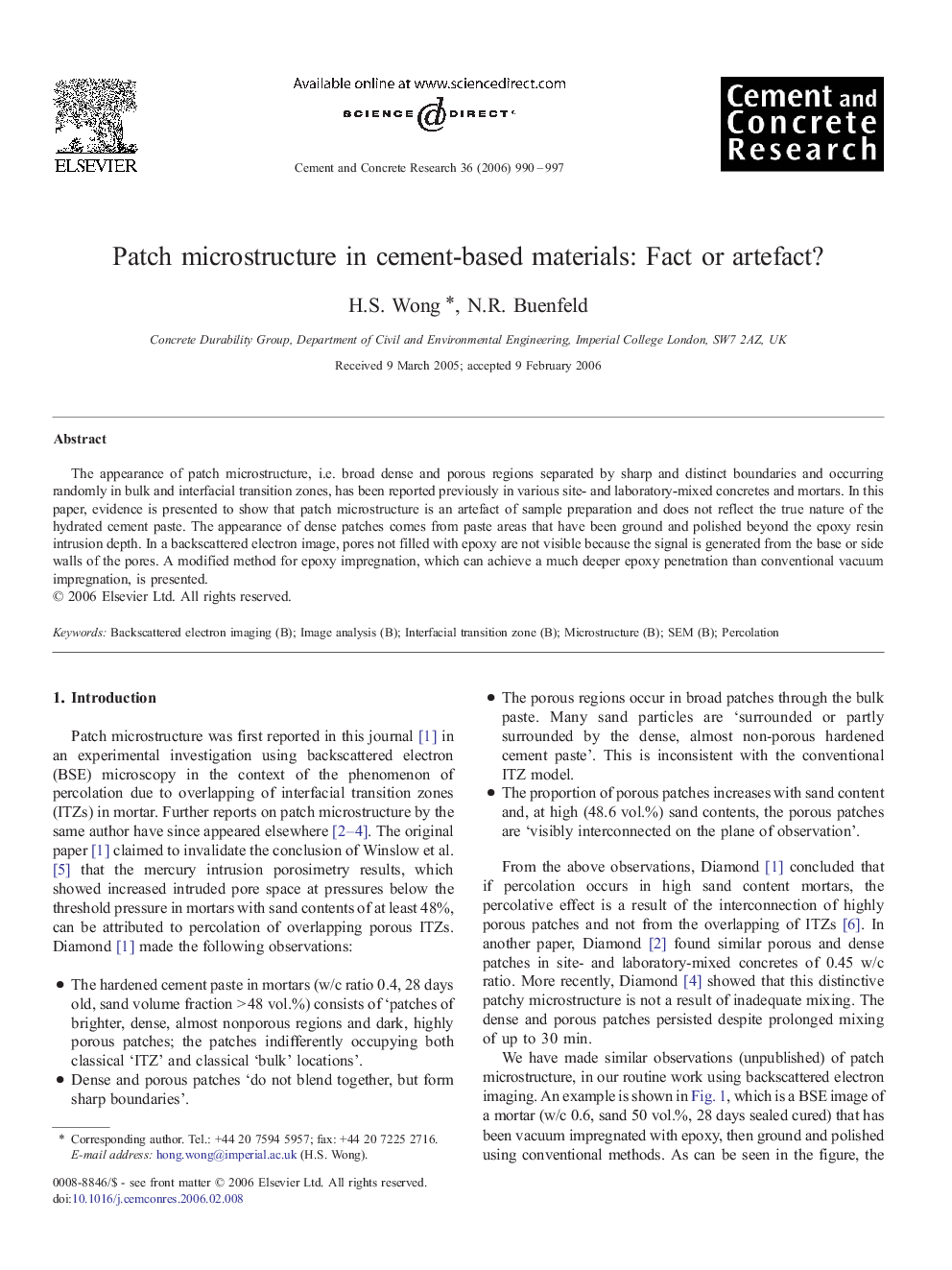| Article ID | Journal | Published Year | Pages | File Type |
|---|---|---|---|---|
| 1457822 | Cement and Concrete Research | 2006 | 8 Pages |
The appearance of patch microstructure, i.e. broad dense and porous regions separated by sharp and distinct boundaries and occurring randomly in bulk and interfacial transition zones, has been reported previously in various site- and laboratory-mixed concretes and mortars. In this paper, evidence is presented to show that patch microstructure is an artefact of sample preparation and does not reflect the true nature of the hydrated cement paste. The appearance of dense patches comes from paste areas that have been ground and polished beyond the epoxy resin intrusion depth. In a backscattered electron image, pores not filled with epoxy are not visible because the signal is generated from the base or side walls of the pores. A modified method for epoxy impregnation, which can achieve a much deeper epoxy penetration than conventional vacuum impregnation, is presented.
